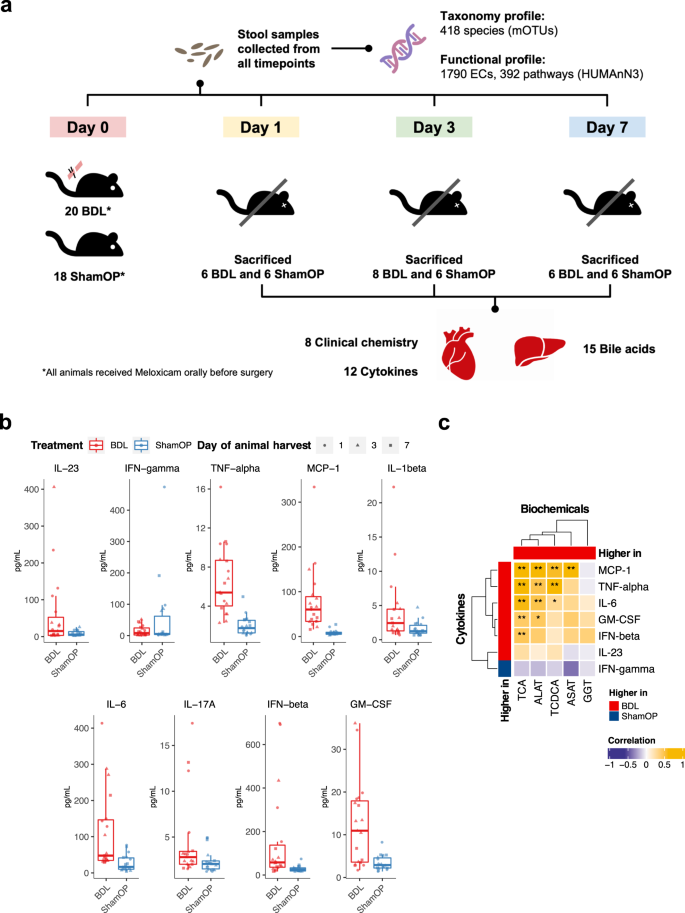💡 Researchers explore the gut–liver immune axis in liver diseases. They conducted analysis of the shotgun metagenomics profile with the host cytokines, liver bile acids, and biochemical markers providing insights into possible mechanisms of the gut microbiome in modulating the severity of liver injury.
📌 Liver Disease (LD) accounts for over two million fatalities annually, linked to metabolic dysfunction, altered gut microbiome, and immune dysregulation. Gut barrier disruption, bacterial translocation, and inflammatory response in the liver are some potential mechanisms that have been suggested in how the gut microbiome may influence non-alcoholic steatohepatitis (NASH) and Non-alcoholic fatty liver disease (NAFLD). Bile acids (BAs) are important metabolites in liver diseases.
📌 Regulating secondary BAs metabolism is one of the known functions carried out by the gut microbiota. The elevation of secondary BAs production was associated with the increase of taurine- and glycine-metabolizing bacteria. Therefore, a rise in secondary BAs may exacerbate NAFLD.
📌 Cholestasis is a condition where bile flow from the liver is decreased or blocked, bile duct ligation (BDL) is a standard method for inducing fibrosis and cirrhosis in mice by introducing obstructive cholestatic injury. BDL reduces the production of hepatoprotective compounds in the gut, such as biotin, spermidine etc.
📌 The higher menaquinone production in the gut microbiome of BDL is linked to elevated E. coli and E. faecalis and reduced butyrate-producing bacteria. Menaquinone production was positively associated with inflammatory cytokines (GM-CSF, IFN-β, IL-23, IL-6, MCP-1, and TNF-α). These results highlighted the association between cytokine profiles and the gut microbiota and revealed the potential mechanism by which the gut microbiome contributes to inflammation and liver injury.
🔴 Researchers in this study explore the contribution of gut microbiota and its potential molecular mechanism during impaired bile acid flow from the liver to the intestine in hepatic inflammation, fibrogenesis, by targeting the relationship between the metabolism, the gut microbiome, and the immune system. They state that bile acids are a cornerstone of the immune axis between the liver and the gut microbiome, and their optimal utilization can help as potential therapeutic targets.
Link to the article: bit.ly/3N6UwRM
Published On: /06/2023
